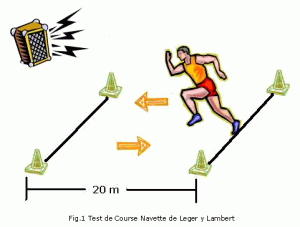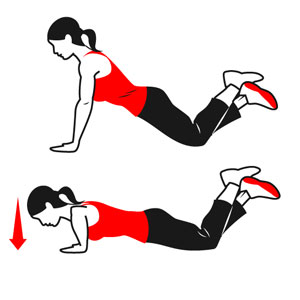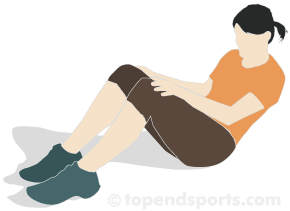The beep test is a commonly used maximal running aerobic fitness test. It is also known as the 20 meter shuttle run test, 20m multistage fitness test,beep or bleep test among others.
Procedure: This test involves continuous running between two lines 20m apart in time to recorded beeps. The test subjects stand behind one of the lines facing the second line, and begin running when instructed by the cd or tape. The speed at the start is quite slow. The subject continues running between the two lines, turning when signaled by the recorded beeps. After about one minute, a sound indicates an increase in speed, and the beeps will be closer together. This continues each minute (level). If the line is not reached in time for each beep, the subject must run to the line turn and try to catch up with the pace within 2 more ‘beeps’. Also, if the line is reached before the beep sounds, the subject must wait until the beep sounds. The test is stopped if the subject fails to reach the line (within 2 meters) for two consecutive ends.



